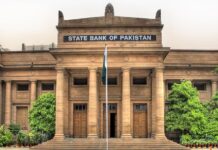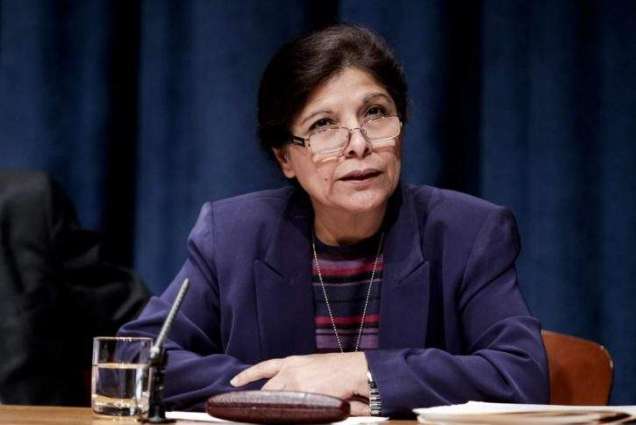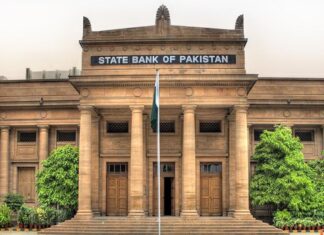ISLAMABAD: With an alarming projection, caretaker Finance Minister Dr Shamshad Akhtar painted a worrying economic picture and said that the total public debt-to-gross domestic product (GDP) ratio will be 74 per cent by the end of the current financial year with a 2 per cent increase within a year.
The present public debt in terms of the total size of the economy was around 72 per cent, which was 14 per cent running over the fiscal responsibilities. The figure recorded by the end of PML-N government’s tenure was historic in the last 15 to 20 years exposing the country to many risks. The high ratio violates the Fiscal Responsibility and Debt Limitation Act (FRDLA) of 2005.
Addressing a seminar on ‘Public Debt – Issues, Challenges and Way Forward held here at the Ministry of Planning and Development, the minister said a debt management policy and fiscal consolidation was needed to be strictly followed. She said that under the present situation managing interest rate could also be a challenge.
Talking about the rise of debts, she said in Pakistan’s case the investment to GDP ratio has been increased due to development activities but without domestic resources ultimately depending on more borrowings. The domestic borrowings during 2013 to 2018 have been recorded Rs16.5 trillion while external borrowings were registered at Rs8 trillion in the same period. In terms of the dollar, the external debt has been recorded at $69 billion while the total public debt has swelled to $ 92.12 billion.
She admitted that there is no short term solution of the issue andthe next government is needed to look into the issue urgently.
She, however, said the public debt should not be measured in isolation whereas it is governed under FRDLA and according to this Act, public debt has to be reduced to 60 per cent by 2017-18 and thereafter a 15-year transition has been set towards a debt-to-GDP ratio of 50 per cent.
She said that around 33 per cent of the total public debt is denominated in foreign currencies with an average life of around 8 years. The minister further stated that during the last five years, several structural change were witnessed in the composition of external public debt with an increased share of commercial borrowings, however, there is a need to reduce reliance on this source of financing.
The minister suggested that government has to emphasise on obtaining concessional and long-term external financing to avoid higher debt servicing and putting in place fiscal consolidation measures by reducing fiscal deficit to below 4 per cent as mentioned in FRDLA and reducing the public debt to GDP ratio to 50 per cent through increasing tax revenue and expenditure management.
She said debt is a reality for growing economies. Pakistan is also a developing country and it has to pursue its high growth ambitions to expand its infrastructure and has to invest in the social uplift of the country.
Finance Division’s Director General, Ehtasham Rashid, in his speech said the public debt witnessed an average annual growth of 11.3 per cent from 2013 to May 2018. Debt mainly increased due to fiscal deficit, IMF loan, balance of payment requirements and rupee depreciation.
According to hi,m the average cost of domestic debt was around 7.9 per cent while the average cost of external debt is around 2.9 per cent. As per analyses of the ministry, if interest rates will increase by 1 per cent then debt servicing will increase by over Rs100 billion. Besides if the rupee depreciated against the dollar by Rs1 that external public debt stock will increase by Rs70 billion and external public debt servicing will increase by Rs8 billion.
Talking about the challenge of shortening of maturity profile and increasing refinancing risk, the DG said, redefining debt dynamics through innovative product structure such as the issuance of ‘floating rate debt’, which attracts market participation particularly during increasing interest rate environment and help to mitigate refinancing risk was needed.
To meet the challenge of increasing balance of payments requirements which required more external financial, the country may focus on other avenues such as the issuance of Eurobonds/commercial loans along with traditional sources.
Suggesting a possible way out for the increasing debt to GDP ratio, he says the federal government’s budget deficit could be reduced at 4 per cent of GDP (excluding foreign grants) during the period 2018-2020 and 3.5 per cent of GDP thereafter. Similarly, a 15 year transition should be set to bring down debt to GDP ratio to 50 per cent by 2032-33.
Planning Commission’s former Chief Economist Dr Pervaiz Tahir said that the present public debt was a record figure since 1990. The total public debt in 2017 was recorded Rs21401 billion from Rs14318 billion registered in 2013. The number of public debt was recorded at Rs711 billion in 1990.
Earlier Secretary Planning Shoaib Ahmed Siddiqui while giving his welcome remarks maintained that it is very encouraging and appreciable to see that the economic stakeholders have gathered under one roof to discuss the upcoming challenges and way forward. He noted that the policy makers in the government are quite aware to redefine debt dynamics through innovative product structure such as the issuance of floating rate debt which attracts market participation.
He said that the government is also devising a strategy to enhance its exports sector through stimulating business community, public private partnership and adopting an innovating approach. The seminar was attended by other senior government officials, policy advisers and the experts including Joint Chief Economist (Macro) Rai Nasir Ali Khan, Senior Officer of the Economist Group Ijaz Wasti, and Chief Money and Pricing, Shoaib Bashir Khan.























